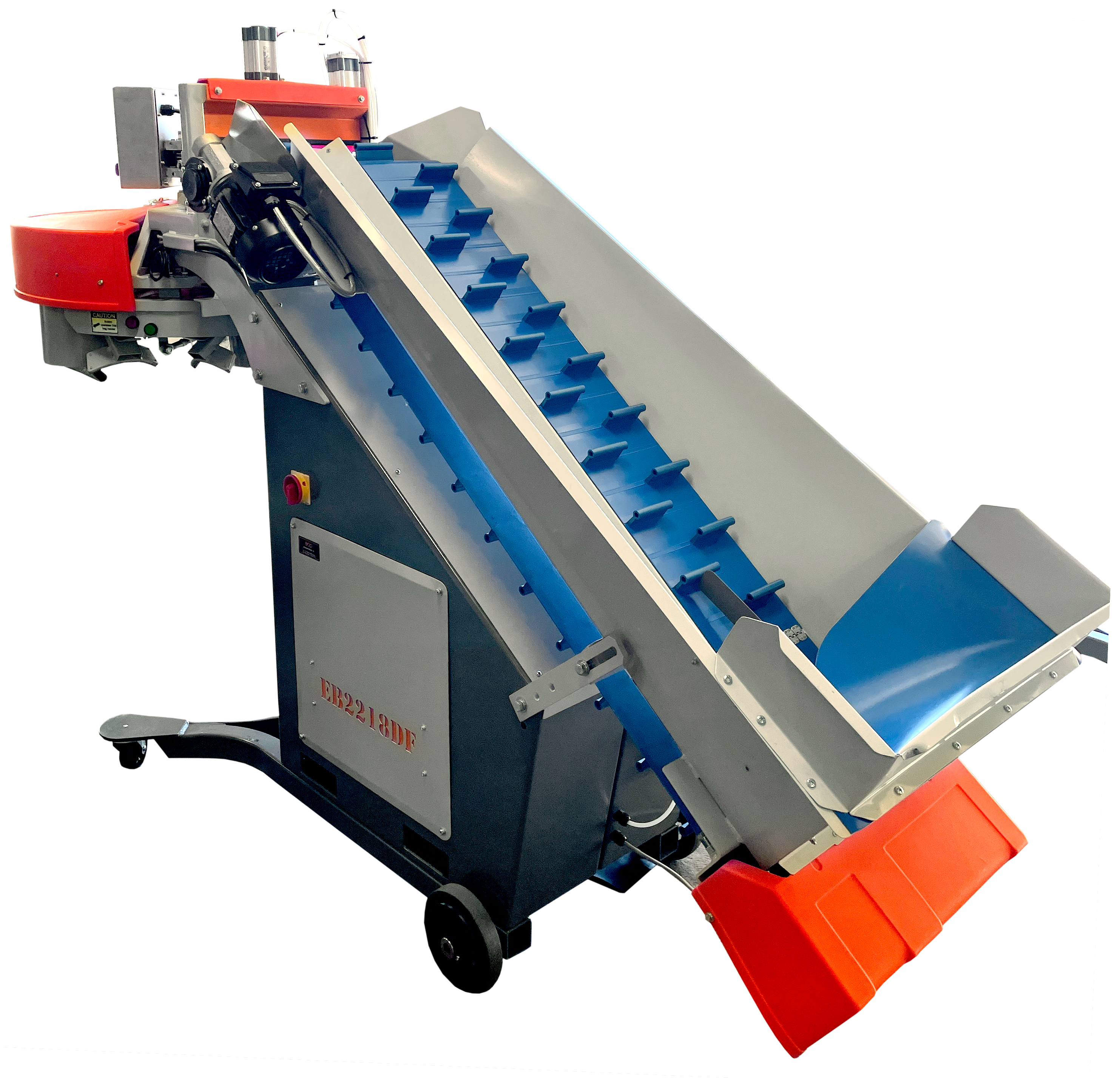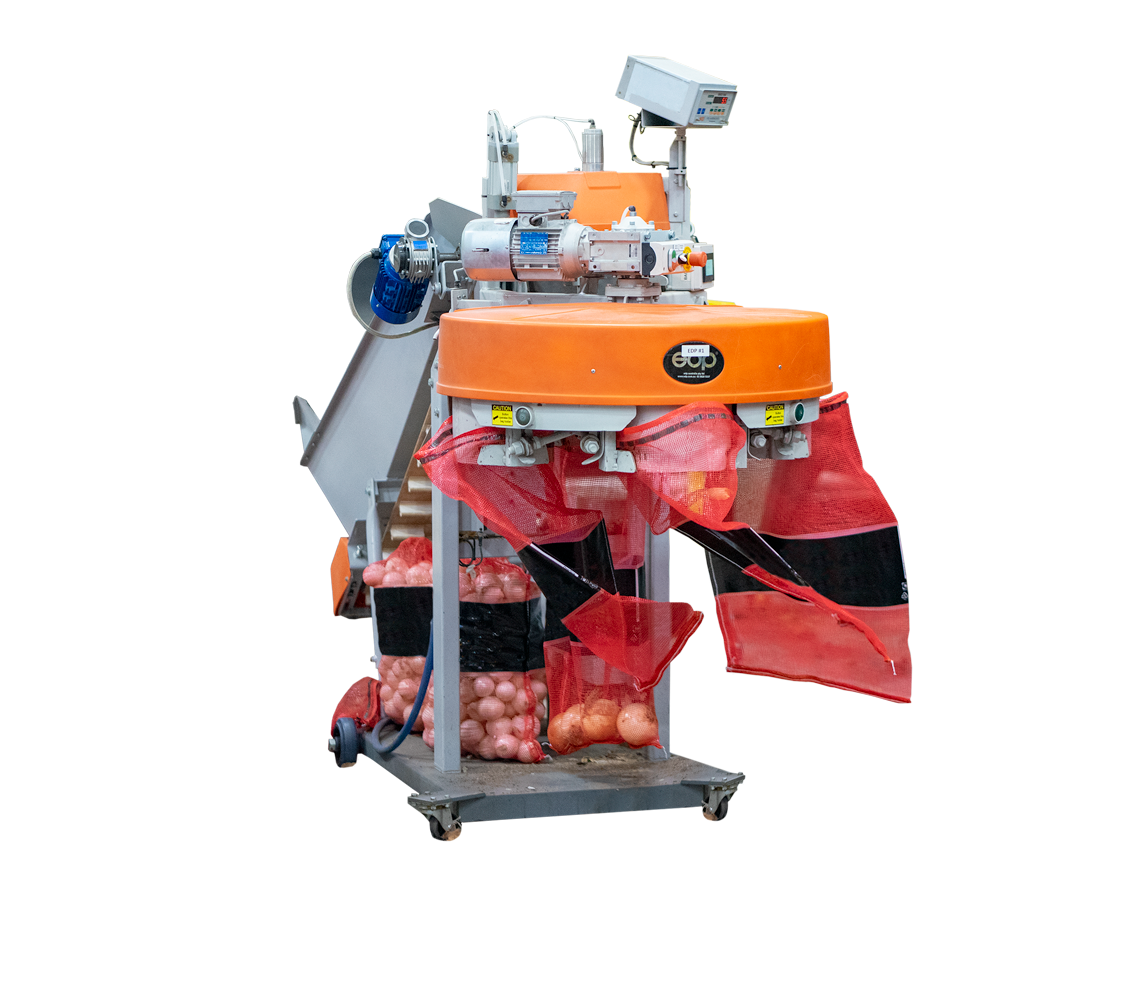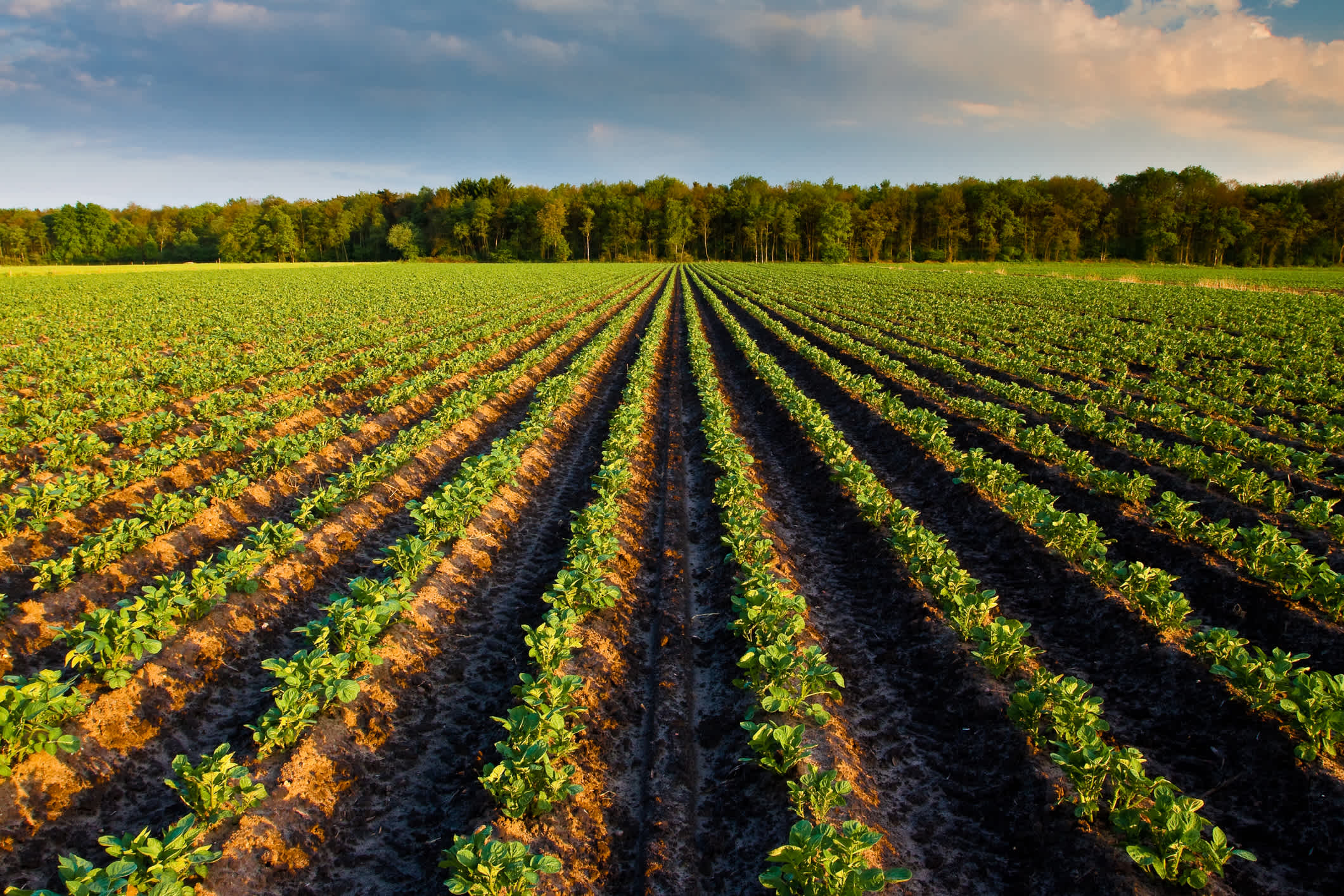The Efficiency Boost of edp Bagging Equipment in Agriculture
Farmers, agriculture-processing managers and other stakeholders are aware of the financial benefits that efficient product movement can bring—but they also understand that any damaged produce means a loss.
That’s where automated, electronic bagging equipment comes in: it protects products while increasing profits by preventing spoilage.
This article will cover:
- Brief history of how bagging produce has moved from manual labor to automation
- Electronic bagging machines: What they are, how they work and their place in packaging technology
- The benefits of using edp bagging equipment for farmers and agricultural professionals during the post-harvest production or packaging process.
- Examples of how electronic bagging equipment can be used in different stages of the agricultural process.
From Manual Labor to Automation: The Evolution of Produce Bagging
For centuries, bagging produce was a manual process that required significant amounts of time and effort. However, with the advent of modern technology, the process has evolved and become more automated.
Here's a brief history of how bagging produce has moved from manual labor to automation:
Manual Bagging: In the early days of bagging produce, the process was entirely manual. Workers would use their hands to fill bags with produce, such as fruits and vegetables. This process was slow, inefficient, and often resulted in inconsistent product quality.
Semi-Automated Bagging: As time passed, semi-automated bagging machines were introduced. These machines could fill bags with produce at a faster rate than manual labor, but still required a significant amount of human involvement. For example, the operator would have to place the bag under the filling head and manually adjust the weight or size of the bag.
Fully Automated Bagging: With the advancement of technology, fully automated bagging machines were developed. These machines can now fill bags with produce at an incredibly fast rate, without the need for human intervention. They can also adjust the size and weight of the bag automatically, resulting in consistent and high-quality packaging.
Benefits of Automated Bagging: The move from manual labor to automation has had a significant impact on the produce industry. Automated bagging machines offer numerous benefits, such as increased productivity, improved efficiency, and reduced labor costs. They also result in a more consistent and high-quality product, which is essential in today's competitive marketplace.
Electronic bagging machines: What they are, how they work and their place in packaging technology
Electronic bagging equipment plays an essential role in modern, large-scale food production.
These machines are designed to automate the bagging process, reducing the need for manual labor and improving efficiency and productivity.
In this section, we will explore how electronic bagging machines work and how to use them effectively.
The 3-Step Process of Electronic Produce Baggers

Electronic bagging machines typically consist of a conveyor belt, a weighing system, a filling system, and a sealing system.
1. Conveyer Belt
The process begins with the conveyor belt, which carries the produce to the weighing system.
2. Weighing system
Using sensors to measure the weight of the produce, the weighing system ensuring that each bag contains the correct amount of product. Once the produce has been weighed, it is transported to the filling system, where it is dispensed into bags.
3. Filling system
Uses a range of mechanisms to dispense produce into bags accurately. These mechanisms can include gravity-fed chutes, , or , depending on the type of produce being bagged. Once filled, the bags are transported to the sealing system, where they are sealed to protect the produce from outside elements.
Bagging machines are designed to provide you with an efficient method of packaging your products while keeping them safe as they travel through the supply chain.
PEPPER EQUIPMENT'S TEAM OF WAREHOUSE CUSTOMIZATION EXPERTS CAN HELP YOU WITH BAGGING EQUIPMENT NEEDS IN YOUR PRODUCTION LINE. .
Features common in most electronic baggers
When it comes to post-harvest production and packaging, using the right equipment can make all the difference.
Features that make electronic bagging equipment reliable and efficient for post-harvest packaging are:
Rectangular bag holders
If you want to be able to use your bagger for a variety of produce and prevent wasted space, rectangular bags are the best option. They'll allow you to easily handle products like carrots, onions and potatoes—and other oddly shaped fruits and vegetables.
Wide entry into the bag at the filling head
This feature allows the machine to fill bags quickly and efficiently without overfilling bags, or having to re-open them after they've been filled. This wide entry makes it easy for you to keep track of your inventory, since everything is clearly visible.
This is especially helpful if you're using different sized produce bags.
Dual speed feed belt for fast & trim feed
Dual speed feed belts are an essential part of any bagger, because they allow the machine to process produce at different speeds. Slower speeds can be used when the bagger is reading barcodes on produce and needs time to process each item. Faster speeds can be used when the bagger has already read all of the produce in its queue and needs to get them out as quickly as possible.
This feature allows precise packaging of all kinds of produce—and that means more efficiency for your business!
Single full width cleated belt to assist in product feed
Using a single full width belt to assist in product feed into an electronic bagger for produce is more efficient and cost-effective packaging than other methods; saving time and money on labor and production costs.
The single full-width cleated belt helps to ensure a steady and even feed of produce into the bag. This prevents any jamming or clogging, allowing for a smooth and uninterrupted bagging process.
This means that when customers receive their purchase from the store, they will be sure to receive only what they paid for.
Electronic table indexing
Electronic table indexing in a bagger helps your operation track inventory on a per-item basis, eliminates manual data entry errors related to coding items by hand and makes it possible for you to track labor costs associated with each item type.
Pneumatic bag clamps
Pneumatic bag clamps are a critical tool for keeping produce fresh. They're not just there to make sure that your produce doesn't get bruised in transit—they also keep pesticides and other chemicals out of your food when you use them. They work by creating a seal around the produce, preventing air from getting in or out, which helps to preserve it longer.
Pneumatic bag clamps also help you save money on packaging materials; instead of using plastic bags or boxes, you can use less-expensive paper bags with pneumatic bag clamps instead.
The benefits of using electronic baggers for post-harvest production and packaging
Agriculture is a cornerstone of our society, providing us with the essential foods we need to survive. In order to keep up with the growing demand for food, farmers and agricultural professionals must continually look for ways to improve their production processes.
One of the ways to do this is through the use of electronic bagging equipment, which offer a range of benefits to agricultural professionals such as:
- Efficiency and productivity
- Consistency and accuracy
- Cost savings
- Improved product quality
- Better inventory management
Efficiency and productivity
Electronic bagging machines are designed to handle large quantities of products in a short amount of time, increasing efficiency and productivity. These machines are automated and can fill and seal bags quickly and accurately, reducing the time it takes to bag products manually. This means that farmers and agricultural professionals can process more products in a shorter period, increasing productivity and output.
Consistency and accuracy
With the right electronic bagging equipment, farmers and agricultural professionals can ensure that their products are accurately and consistently weighed and bagged. This reduces the risk of errors and ensures that each bag contains the correct amount of product. This level of consistency and accuracy is particularly important for crops that are sold by weight, such as grains or produce.
Cost savings
The use of electronic bagging machines can result in cost savings for farmers and agricultural professionals. By automating the bagging process, they can reduce the need for manual labor, which can be expensive and time-consuming. Additionally, electronic bagging machines can help reduce product waste by ensuring that each bag contains the correct amount of product, reducing the need for rework or discard of wrongly filled bags.
Improved product quality
Electronic bagging machines can help improve the quality of agricultural products. These machines are designed to minimize exposure to outside elements, such as moisture or insects, ensuring that products are protected during the bagging process. This helps to maintain product freshness and quality, which is important for preserving the shelf life of the products.
Better inventory management
Electronic bagging machines can be used to manage inventory by accurately measuring and recording the amount of product in each bag.
Accurate inventory management can help farmers and agricultural professionals to reduce waste, make better use of their resources, and make more informed business decisions.
Electronic Baggers Like edp ElectroBaggers Can Seamlessly Work with Other Machinery Along Your Produce Production Line

Electronic bagging machines like can seamlessly work with other machinery along your produce production line. From bulk packaging to consumer bagging, conveying and storing, packaging, palletizing, receiving, sizing and visual grading, and washlines, electronic baggers can be integrated into various stages of production to streamline the entire process.
By working with other machinery, electronic bagging machines can help farmers and agricultural professionals increase efficiency, reduce labor costs, and ensure that their products are packaged accurately and efficiently.
From receiving and washing to packaging and palletizing, electronic bagging machines like edp baggers can work seamlessly with other machinery to streamline the entire production process. Here's how electronic baggers can work with other machinery along your produce production line:
edp electronic bagging equipment can work with bulk packaging machinery to fill bulk bags with different agricultural products. Bulk packaging machinery can transfer product to an electronic bagger, where it is weighed and packaged into smaller consumer bags for sale or distribution.
edp machines can work with carton sealers and carton erectors to package agricultural products into larger cartons for retail or wholesale distribution. This electronic bagging equipment can fill bags of various sizes and weights that can then be placed into cartons and sealed with a carton sealer.

edp’s baggers like the and the are consumer baggers to package agricultural products into smaller bags for retail sale. Consumer baggers can take pre-packaged bags from electronic baggers and package them into smaller consumer bags for distribution.
edp bagging equipment can work with conveying and storing machinery to transport and store packaged agricultural products. Once a bag is filled, it can be transported along the production line by conveyors and stored in holding bins before being transported to the next stage of the production process.
Electronic bagging equipment is a critical part of the packaging process. They can be used to package various agricultural products, including fruits, vegetables, nuts, and seeds. Once a bag is filled and sealed, it can be transferred to other packaging machinery for labeling, coding, and boxing.
edp bagging equipment can also work with palletizing machinery to palletize packaged agricultural products for transport and storage. Once a bag is filled and sealed, it can be transferred to a palletizer, where it is stacked onto a pallet and secured for shipping.
edp bagging equipment works with receiving machinery to unload and transfer agricultural products from trucks and trailers. Once the product is received, it can be transported to the next stage of the production process, where it is weighed and packaged by an electronic bagger.
edp bagging equipment works with sizing and visual grading machinery to sort and grade agricultural products by size and quality. Once the product is graded, it can be transferred to an electronic bagger, where it is weighed and packaged according to its size and quality.
and Weighers:
Electronic bagging equipment can also work with washlines to clean and sanitize agricultural products before they are packaged. Once the product is washed and sanitized, it can be transported to an electronic bagger, where it is and packaged for distribution.
Examples of How Electronic Bagging Machines Can Be Used in Different Stages of the Agricultural Process
Electronic bagging machines are a versatile and efficient solution for packaging various agricultural products—not just produce.
Here are some examples of how electronic bagging machines can be used in different stages of the agricultural process:
Seed Packaging:
Electronic baggers can be used to package different types of seeds, such as grains, vegetables, and flowers. These machines can weigh and fill bags accurately, ensuring consistent seed packaging. This is particularly important for commercial seed suppliers who need to ensure that their products meet specific weight and quality standards.
Fertilizer Packaging:
Electronic baggers can also be used for fertilizer packaging. They can fill bags with different types of fertilizers, including granular, powder, and liquid. These machines can handle various bag sizes and weights, and they can fill bags quickly and efficiently, which is essential during the busy planting season.
Produce Packaging:
Electronic bagging machines are commonly used for produce packaging. They can handle various types of produce, including fruits, vegetables, and nuts. They can weigh and fill bags accurately, ensuring consistent packaging for retail or wholesale distribution. These machines can also be equipped with sorting and grading capabilities, which help to ensure that only high-quality produce is packaged and distributed.
Animal Feed Packaging:
Electronic baggers are also used for animal feed packaging. They can handle various types of feed, including pellets, grains, and powders. These machines can fill bags quickly and efficiently, ensuring that feed is packaged and distributed in a timely and cost-effective manner.
Conclusion
The evolution of produce bagging from manual labor to automation has been a significant development in the agriculture industry. With the introduction of fully automated bagging machines, the process has become faster, more efficient, and more consistent.
As the demand for produce continues to increase, it is essential for farmers and agricultural professionals to embrace these technological advancements to remain competitive in the market.
Pepper Equipment’s customers have seen tremendous benefits from using edp electrobagging equipment. Are you ready to find out if this is right for your production line?
